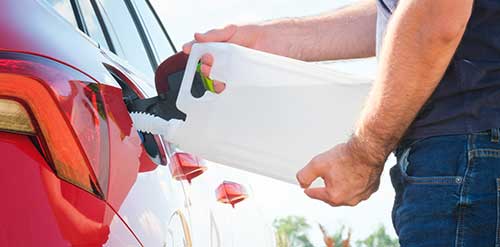Hyundai Motorstudio Senayan Park
Hyundai Motorstudio Senayan Park
Newsroom
The official news from Hyundai Motorstudio Senayan Park and a collection of innovative articles on mobility and sustainability here.
-
9 Ways to Save The Gas Without Harming Your Engine
- Hyundai Motorstudio Senayan Park Senayan Park 2022.06.27
-
Saving gasoline means saving your budget. That's simple logic!
Saving on fuel would save your operating budget, which could be massive if you accumulate it for a year. But saving on gas doesn't just save money.
More than that, saving fuel can reduce the chance for cars being damaged and increase safety while driving. So, there are many positive effects for saving gasoline.
Fuel saving is basically a technique which aims to make gasoline consumption more efficient so the carbon dioxide production is reduced by up to 25%. The methods are very diverse, and anyone can do it without hassle.
How to Save the Gas
Various techniques can be applied to make gasoline consumption more efficient.But saving fuel is not only related to using a fuel-efficient car and managing speed, it's more about driving management.
1. Accelerate Slowly
Hard acceleration will increase the gasoline consumption because the engine rotates faster. In terms of gasoline efficiency, this driving style clearly cannot be justified. Try to step on the gas pedal slowly to increase the speed.
To make gasoline consumption more efficient, press the pedal slowly for 5 seconds to increase the speed to 20 km per hour from a stop position. The acceleration must be done as smooth as possible and avoid hard tapping the gas pedal to increase the speed.
2. Avoid the Idle
Idle is useful for making the car in a ready condition to drive. In return, gasoline consumption will increase. To save the gas, turn off the car if you stop for more than 60 seconds, except in traffic jams.
The average vehicle with a 3L engine configuration wastes 300 ml of gasoline every 10 minutes in idle position, similar to 1 cup of gasoline.
3. Stabilize the Speed
Try to stabilize the speed and avoid opening or closing the gas too often because there is a lot of gasoline consumed in the process. Frequent opening of the gas will increase gasoline consumption, it means it will cost you more to buy the gas than it should.
Tests show that increasing or decreasing the speed between 75-85 km per hour can lead to gasoline consumption by 20%. Consider taking advantage of Cruise Control features if the road is favorable.
But varying the speed is useful to save the gas in some conditions. When driving to a hilly road, increase your speed from the bottom to gain a momentum, then release your pedal as you descend the hill and let gravity do the work.
4. Tire Pressure
Tire pressure has a direct effect on fuel consumption. Driving with flat wheels increases gasoline consumption by up to 4%., and reduces the tire life by more than 10 thousand km.
Besides the air pressure, the tread has the same effect on the gas consumption. Too thick will increase the gasoline consumption, as well as if it is too thin or even bald. Next time you drive, pay attention to the tire pressure and the tread according to the standard.
5. Avoid the Traffic
Among the parts of driving management to save the gas, avoid traffic jams. It will consume more fuel because the car is basically on but not moving. Some roads are known for their frequent traffic jams, so it would be better to avoid these roads in the first place.
Before the journey, it's a good idea to learn the road and map out the alternative routes. Along the road, keep your distance from other cars in front and behind. By doing this, your speed can be stabilized so the gas consumption becomes more efficient.
6. Reduce the Weight
When the car is given more load, it will consume more gasoline because the engine needs to produce more power to run the vehicle. Reduce the weight and other objects that are not needed, including unused car components.
The lighter the load, the less gasoline is consumed. As an illustration, gasoline consumption will increase by 1% for every 25 kg of goods carried.
7. Avoid High Speed
The majority of cars will be more fuel efficient when traveling at a speed of 50-80 km per hour. If you go beyond that number, the engine consumes more gas than it should.
With a speed of 120 km per hour, a car will consume 20% more gas compared to 100 km. With a distance of 25 km, the increase in speed and fuel consumption will only make a difference of 2 minutes.
8. Avoid Cooler
The cooling system does add comfort when driving, but the gasoline consumption increases by 20%. If you want to save fuel, avoid using a cooler.
Open the windows and let the breeze cool the cabin. This trick is powerful to reduce gas consumption while increasing driving efficiency.
9. Coasting Technique
Each time the brake is pressed, there is wasted momentum. By looking at the traffic conditions in front, the driver can take precaution steps when to reduce the speed without pressing the brake too hard.
The coasting technique is basically letting the car continue to run using the remaining speed. So, the gas consumption can be reduced and the budget can be saved simply by reducing the frequency of acceleration and deceleration.




